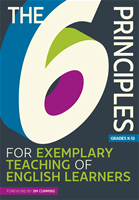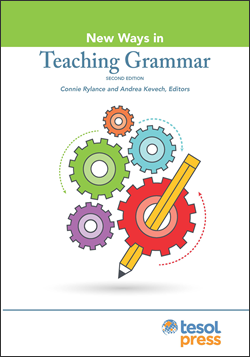Quick Tip: 3 Easy Strategies for Newcomers
by Mary Campbell
The following are simple and effective strategies for newcomers that require minimal prep and can be easily modified to use with any level of English learner—but are excellent for newcomers or those with limited English. As an English language teacher in U.S. schools, I am, like most educators, always limited by time to make resources and to buy new ones. However, these strategies are staples that any teacher can add to their toolkit for use throughout the year; once students are familiar with them, they are simple to initiate and implement, and they result in increased student engagement and teacher efficiency.
1. I Say, You Say
This first strategy is exactly what it sounds like. I, the teacher, will say something, and then you, the student, will repeat it; it is similar to choral repetition. The purpose of this strategy is to get students talking and hearing a concept. This helps students with pronunciation, retention, and increased engagement. You could use this strategy for vocabulary, as in singular words, or for more extensive concepts like definitions, phrases, or short paragraphs/stanzas. For newcomers, vocabulary or short sentences are ideal.
2. Mirrors to Words
This strategy is similar to total physical response; however, with this strategy, the student will act out a concept as they use words that match it. To use this strategy, start with both hands up, palms facing out. Then, say “Mirrors,” and the students repeat. This means that students will now mirror whatever you act out. The next step is for you to say, “mirrors to words,” and the students repeat after you, which now means that the students will not only mirror your actions but will also orally repeat what you say.
This is an excellent strategy to teach a concept, such as the main idea, making predictions, inferencing, or text features. However, it’s important that, as the teacher, you know what you are going to act out and say beforehand, so that the students can easily mirror your actions and words. Mirrors to Words is excellent because it requires no additional resources but yields 100% engagement in a comfortable learning environment: Everyone is doing the same thing at the same time. This makes students less apprehensive if their language level may be lower than others.
3. Abbreviated Anchor Charts
This strategy is a time saver for lesson delivery and also allows students to see the direction of the lesson by referencing what will come next. For this strategy, fill in part of an anchor chart on the topic being taught. Next, during the lesson, fill in the missing sections. This compels students to be more engaged in the learning and content because you can spend less time creating the anchor chart during the lesson. It also allows students to easily follow along with the lesson in case they do not understand all of the language, vocabulary, or concepts being taught. Additionally, it requires minimal resources and time on your part and results in a completed anchor chart for students to reference their new content.
Check out these three strategies in action along with two more in this 5-minute video of my own teaching.
Mary Campbell is an ESL teacher in North Carolina, USA. Mary has a BA in international studies and French and an MAT in ESL, and she is an National Board Certified Teacher in English as new language.
TESOL Blogs
Interested in writing a blog for TESOL?
Read the submission guidelines and send us your post!
Check out some of the most recent TESOL Blogs:
|
The Unapologetic Advocate: Why We Advocate, by David Cutler
 This blog has been a long time coming. Truth be told, I put this off for a long time; not because I had no idea what I wanted to say, but because I didn’t know how to say it. I decided on the version that reflects me the most: the brutally honest, oftentimes sarcastic, unapologetic one. I’m well aware that my style might be different than what is normally posted in this space, but I also think we shouldn’t be afraid to be honest about how we feel, what we’re thinking, and who we are, especially when it comes to advocating for the things we care about. So, if you came here expecting a black and white picture on advocacy, I’m not sorry; advocacy and policy work is as gray a picture as you can get. Read more. This blog has been a long time coming. Truth be told, I put this off for a long time; not because I had no idea what I wanted to say, but because I didn’t know how to say it. I decided on the version that reflects me the most: the brutally honest, oftentimes sarcastic, unapologetic one. I’m well aware that my style might be different than what is normally posted in this space, but I also think we shouldn’t be afraid to be honest about how we feel, what we’re thinking, and who we are, especially when it comes to advocating for the things we care about. So, if you came here expecting a black and white picture on advocacy, I’m not sorry; advocacy and policy work is as gray a picture as you can get. Read more.
|
|
Video for ELT, Episode 1: TED Talks, by Greg Kessler
 There are many engaging ways to use video and video creation projects in teaching English. There are also, of course, numerous videos online that can be useful in various English teaching contexts. Video streaming sites such as Vimeo and YouTube provide access to a seemingly endless supply of video content, but this can quickly result in the sensation of being overwhelmed and leave teachers uncertain of where to begin. Read more. There are many engaging ways to use video and video creation projects in teaching English. There are also, of course, numerous videos online that can be useful in various English teaching contexts. Video streaming sites such as Vimeo and YouTube provide access to a seemingly endless supply of video content, but this can quickly result in the sensation of being overwhelmed and leave teachers uncertain of where to begin. Read more.
|
|
Language Acquisition vs. Language Learning in Elementary School, by Judie Haynes
 One of the questions I am most frequently asked is how I teach grammar rules to young English learners (ELs). Well, the truth is that I never taught out-of-context grammar to young students. I learned early in my career that research shows that grammar drills do not work with students of any age. According to Krashen (1988), a linguist specializing in theories of language acquisition and development, there is an important distinction between language acquisition and language learning. Read more. One of the questions I am most frequently asked is how I teach grammar rules to young English learners (ELs). Well, the truth is that I never taught out-of-context grammar to young students. I learned early in my career that research shows that grammar drills do not work with students of any age. According to Krashen (1988), a linguist specializing in theories of language acquisition and development, there is an important distinction between language acquisition and language learning. Read more.
|
TESOL Bookstore

Featured Resources from TESOL Press
 The 6 Principles for Exemplary Teaching of English Learners
The 6 Principles for Exemplary Teaching of English Learners
With a Foreword by Jim Cummins
TESOL International Association Writing Team
As the number of English learners around the world soars, so does the need for quality English language instruction. TESOL International Association has furthered its ELT leadership role by defining a core set of principles for the exemplary teaching of English learners. The 6 Principles will help you make informed decisions to improve English language instruction and assessment. These foundational principles are for all educators and are applicable across different educational settings. This book features a detailed explanation of The 6 Principles, practical applications for your classroom, ideas for building a strong community of practice, and more!
 New Ways in Teaching Grammar, Second Edition
New Ways in Teaching Grammar, Second Edition
Connie Rylance and Andrea Kevech
Unsure of how to include creativity and project-based learning in grammar lessons? The 2nd edition of this best-selling book includes updated activities and new contributions that cover a wide range of teaching techniques -- from introducing a specific grammar point to providing meaningful, contextualized practice.
 More Than A Native Speaker: An Introduction to Teaching English Abroad, Third Edition
More Than A Native Speaker: An Introduction to Teaching English Abroad, Third Edition
Don Snow and Maxi-Ann Campbell
In this newly updated third edition, learn step-by-step how to effectively teach English abroad. Gain valuable tips and resources for teaching in an unfamiliar educational system, working with students of varying ages and skill levels, and adapting to life in a different culture. A rich array of online resources and activities included.